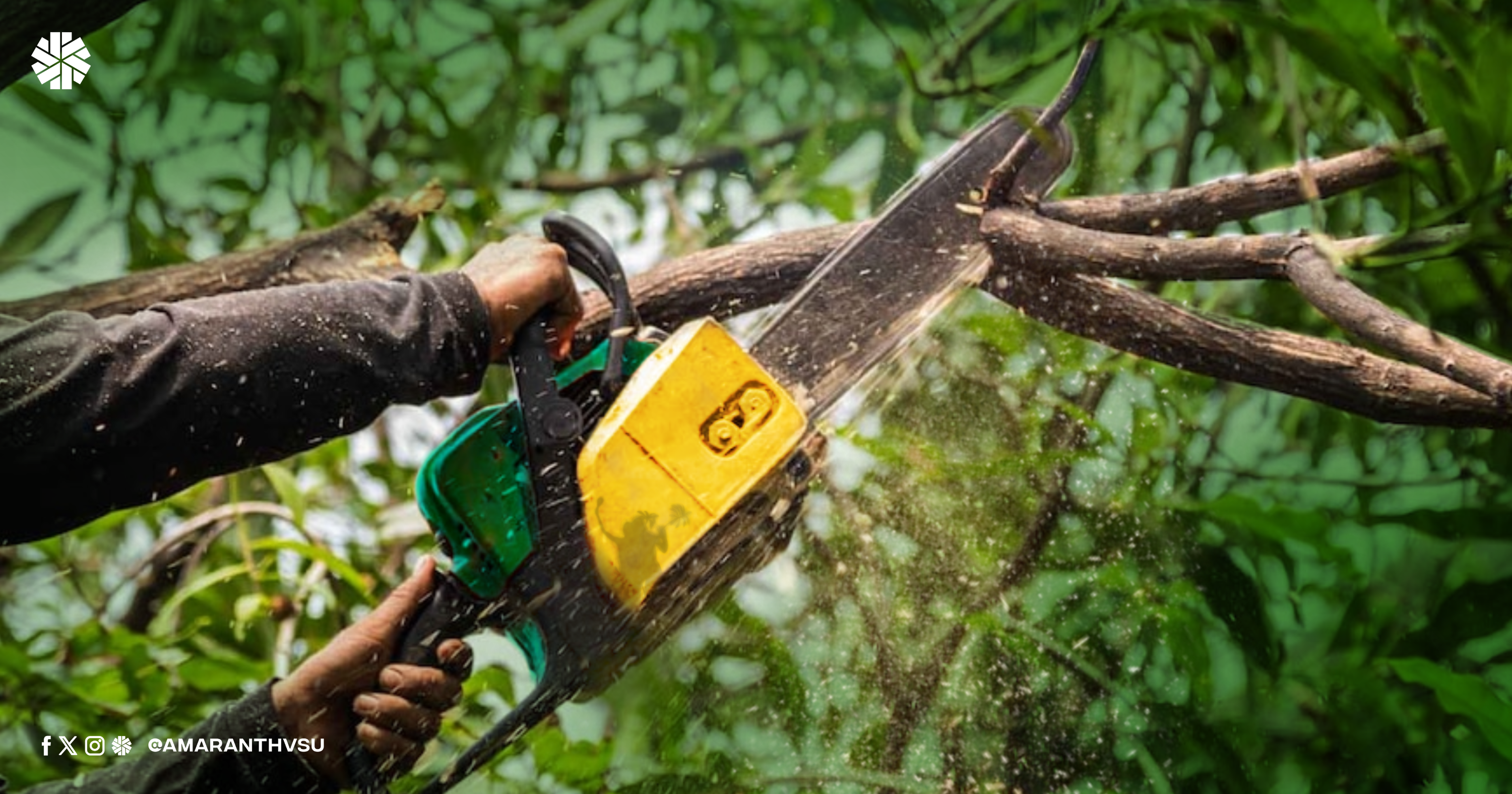Visayas State University (VSU) is well known for its lush green scenery, offering shade and a calming atmosphere for the students and faculty. However, these past months, the university’s pride in lush greenery has slowly been cut down, in the most literal sense. Native trees ranging from the Eco Park up to the Department of Arts, Letters, and Languages (DALL), Department of Philosophy and Social Sciences (DPSS), and Department of Tourism and Hospitality Management (DTHM) have now been pruned, and Viscans are left questioning the rationale of this action.
It can be noted that tree pruning operations started last year when Eco Park noticeably had a couple of native trees gashed. Since then, students and faculty alike have raised concerns regarding the detrimental effects of the said operations, entailing that the trees that used to provide shade for the benches and tables found in the park are already non-existent and the heat prevents one from lounging in the area unlike how it was before. Many have also complained that cutting down the trees along the steep walkways of the aforementioned departments, lessens the shade when walking, especially since the university’s classrooms are relatively distant and Baybay has a microclimate with weather ranging from either too hot or too cold. This makes it harder for one to baktas their journey from one class to another.
Authorities say that the justification behind the cutting was due to electrical safety, and promptly, there is an extensive amount of research that goes into justifying and cutting each tree. Valid that these may also apply to aesthetic landscaping and the health of the surrounding flora at play, one may still question as to how far the university is going to continue with this.
In Dr. Edgardo E. Tulin’s 2023 State of the University Address (SUA), he emphasized VSU’s goals to become a National Green University by championing sustainable practices in its five areas of instruction, research, extension, innovation, and production services. But, with all these trees being cut, are we still living up to the promises of being a green university? Unless we’ve forgotten that it is the foundation of where our university has stood in the past years, where does our vision of ‘environmental conservation’ come in?
Arguably, the university is still aiming for environmental conservation since it’s noted that graduating students plant their shares of tree seedlings before eventually coming out of the university. Departmental and non-academic youth organizations have also participated in such initiatives. Albeit these efforts are highly commendable, they only offer one side of the coin with the issue. Hiding the pruned greenery by substituting it with new planting activities only suggests that we have a long way to go if we want to fully realize our conservation claims.
We should take into account the environment in which this green university is situated, which is what makes its identity green in the first place. Pangasugan is home to a diverse ecology that demands responsibility when undertaken with drastic environmental pursuits such as pruning. These recent cutting operations oppose the goal of environmental conservation, rejecting the thrive of lush dendrology that the university has and is known for in the first place.
The university must evaluate the impact of such actions not just solely on the environment but to fair up with its constituents. Safety is of paramount importance, but hopefully not at the expense of VSU’s identity and integrity. If native trees are removed, they should be replaced with more manageable species to preserve VSU's green identity—a hallmark of its essence. Alternatively, the university should offer more support to the way that they are cut to ensure that they are, at the very least, properly done.
Lastly, encouraging the stakeholders, faculty, staff, and the student body to actively participate in the discussion of tree pruning projects can raise awareness about the significance of tree maintenance and environmental responsibility. A holistic approach involving everyone that is on campus must be prioritized. Campus-wide engagement in educational programs, workshops, and volunteer opportunities can foster involvement in tree care initiatives in the long run, so much so that not only environmental science and forestry students would get involved.
We could only hope that the next VSU President would critically assess the conditions of the Eco Park and the trees near the walkway slope from DALL, DPSS, to DTHM—and find ways to meet a middle ground—where it would still embody its identity of a green university, honoring the visions of the presidents that came before, while still maintaining proper safety precautions, and answering to the calls of every Viscan as to why and how these actions need to be done in the first place.
As stewards of our university's green legacy, we cannot just turn a blind eye while trees are being cut from left to right. While we may not rescue every tree from its eventual demise, we must confront this pressing issue head-on and demand accountability. Cutting trees indiscriminately contradicts our commitment to environmental conservation. It's time to safeguard our campus greenery with purpose and passion, lest we betray the very essence of VSU's environmental pride.
Slick contributed to this article


